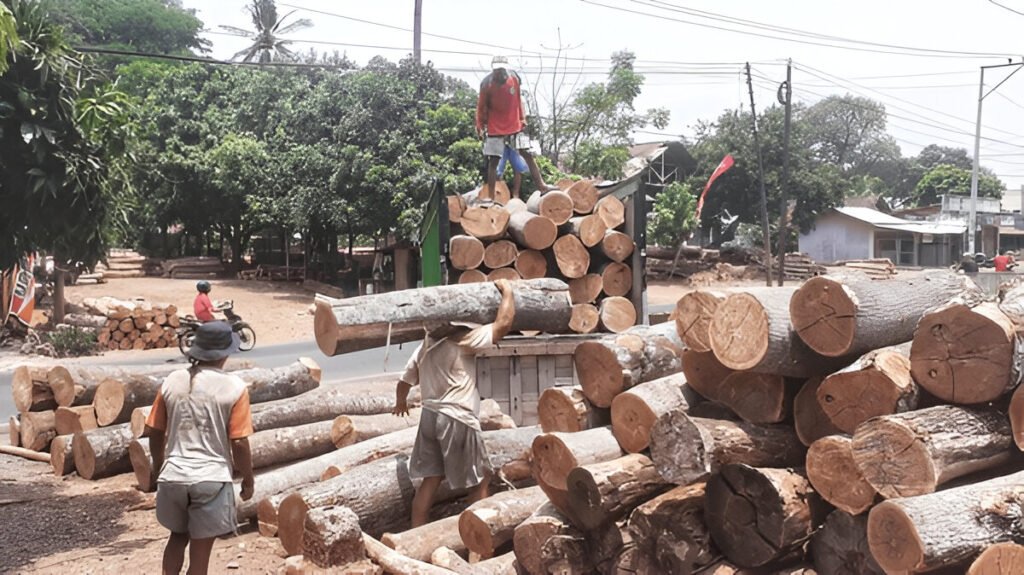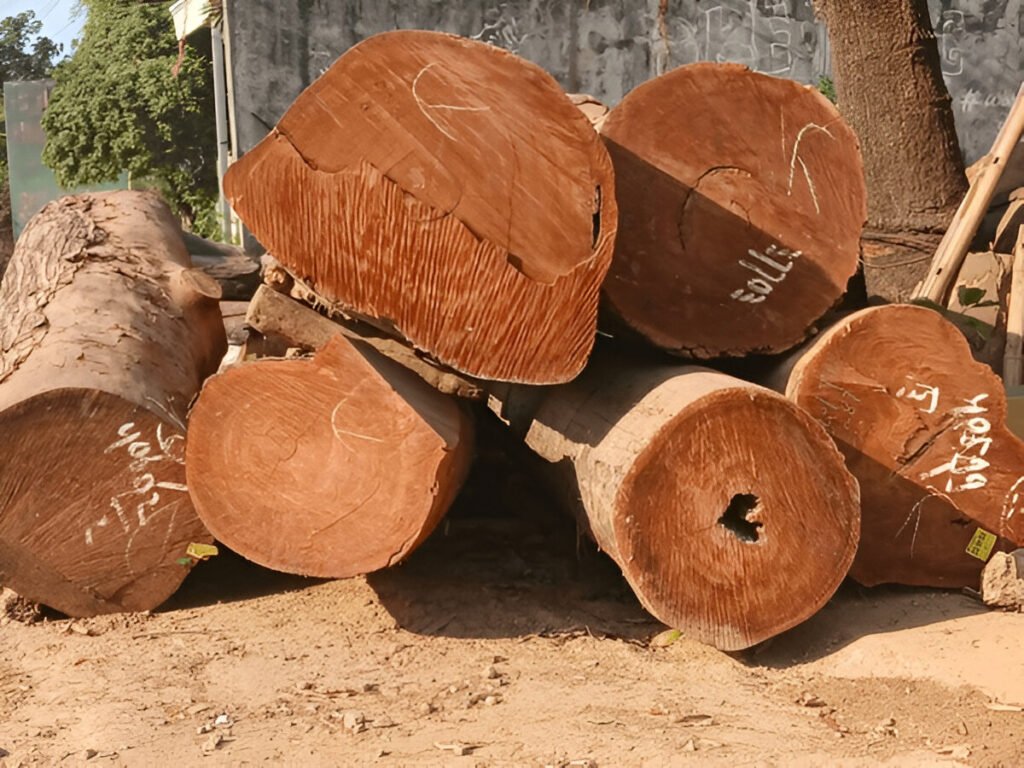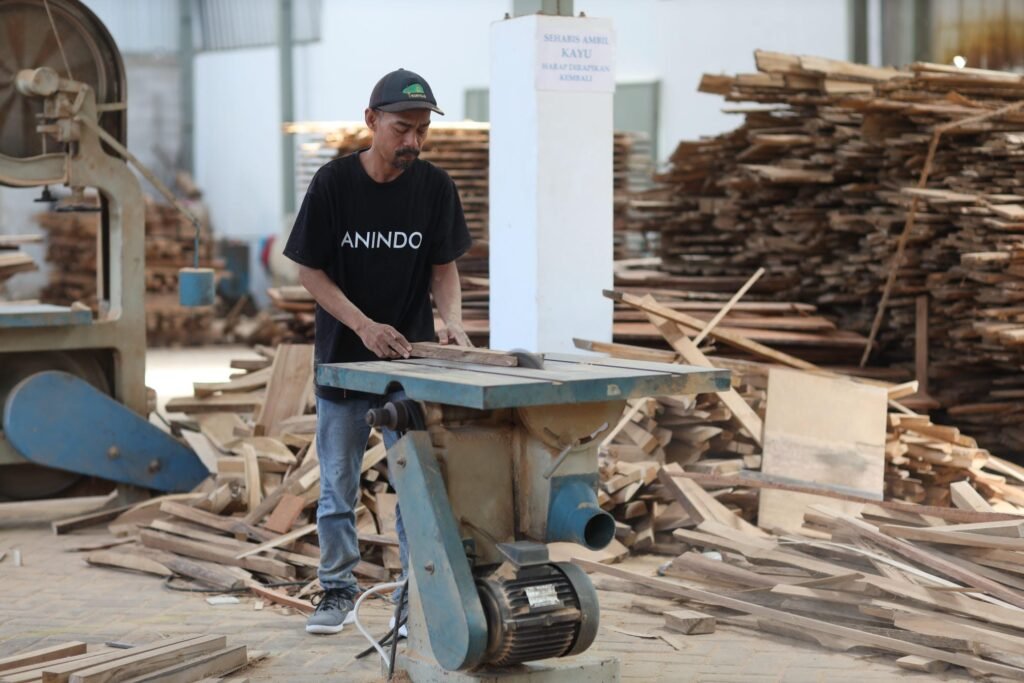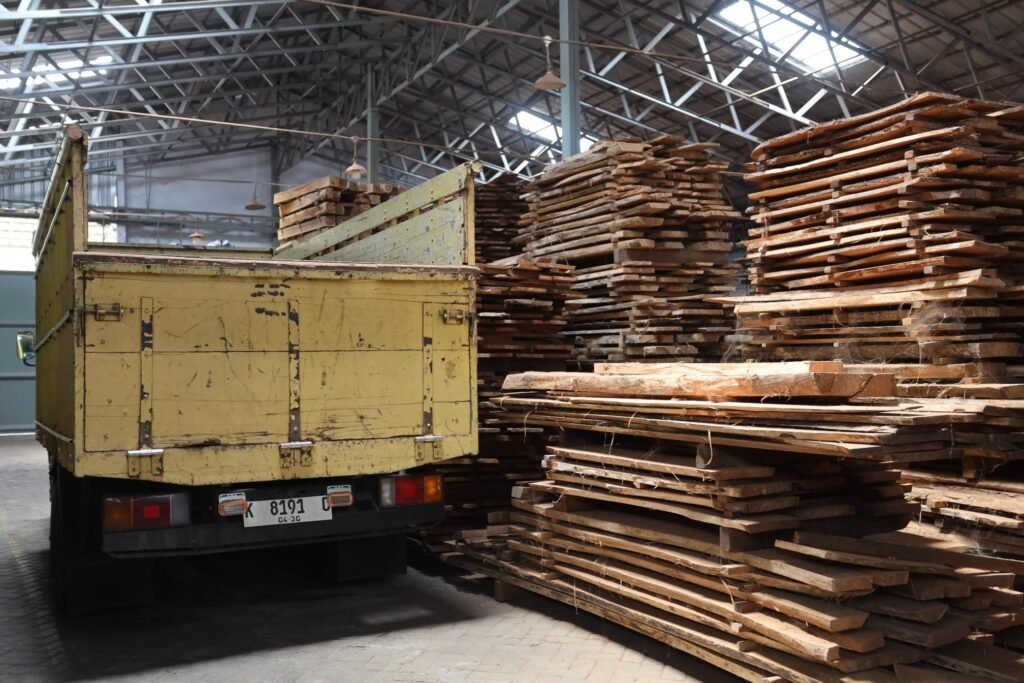PROCESS - RAW MATERIAL & SAWMILL CUTTING
1. Sourcing RAW MATERIALS
At Anindo, we pride ourselves on offering premium wood products that meet the highest quality standards
In our processing of timber and sawn timber, we focus intensely on the quality and origin of the materials we use
We source teak from licensed Indonesian plantations and certified suppliers to ensure FSC (Forest Stewardship Council) or equivalent standards
We evaluate logs based on teak standards: diameter (minimum 30cm for Grade B/C), straightness, and heartwood ratio
For alternatives like mindi or mahogany, we check for uniform color and density


Grade A Teak Wood
- Characteristics : Light golden-brown to reddish hues, fine micrograin texture, and uniform structure resistant to warping
- Applications: Premium outdoor furniture, luxury interior cabinetry/flooring,
- Advantages: Offers exceptional durability with natural oils resisting rot/decay, and superior aesthetic refinement in grain/color
- Limitations: Faces extreme scarcity and prohibitive costs
Grade B & C Teak Wood
- Characteristic : Warm brown tones with visible pores and grain variations
- Application : Outdoor garden furniture, commercial interiors, and mid-range tables/beds
- Advantage : Affordable, widely available, legally certified, and retains good natural durability
- Limitation : Requires more maintenance (e.g., annual oiling) for outdoor use
Mindi Wood
- Characteristics: Light to medium reddish-brown color with straight grain
- Applications: Exclusively recommended for indoor furniture due to its lower natural durability
- Advantages: Excellent workability, stable dimensional properties, and attractive finish
- Limitations: Not suitable for outdoor applications without extensive chemical treatment
Mahogany Wood
- Characteristics: Similar to Mindi but typically with darker, more uniform color
- Applications: Indoor furniture only
- Advantages: Strong, stable, and finishes beautifully
- Limitations: Requires protective coating for any outdoor exposure
2. Sawmill Cutting
We first remove the bark from logs to protect our machines and ensure the wood is clean.
The logs are then precisely cut into straight planks using high-tech saws optimized for efficiency.
We smooth the edges and trim each plank to achieve perfect, consistent dimensions and remove defects.
Every piece is sorted by quality and size, ensuring they’re ready for immediate use or kiln-drying.
Air-drying our wood is done carefully with spacers to prevent warping and ensure lasting strength and beauty.


Step 1: The First Cut
Our skilled team starts by carefully cutting the logs into large, rough planks
We use powerful saws that are guided by artisan to make very precise cuts
This ensures that we get the most useful wood from each log with very little waste
Step 2: Shaping the Edges
After the first cuts, the planks still have rough edges
Next, we carefully trim these edges to make them perfectly smooth and straight
Every piece is then measured and cut to the exact length for our project requirements
Step 3: Checking for Quality
Quality is the most important part of our process
Each plank is inspected to make sure it meets our high standards
This careful check guarantees that every piece of wood we deliver is perfect for our customers’ projects
Step 4: Stacking Wood
Finally, we sort the planks based on their intended use
Some wood needs to be slowly dried to make it stable for indoor use
For this, we stack the planks with small spacers in between to allow air to flow, which helps the wood dry evenly without warping
